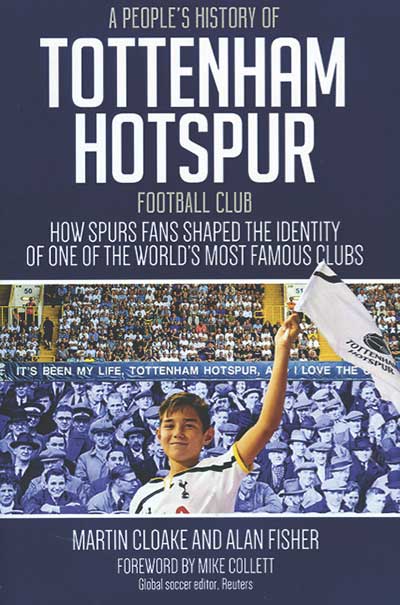
by Martin Cloake and Alan Fisher
Pitch Publishing, £17.99
Reviewed by Nick Dorrington
Buy this book
Tottenham Hotspur’s bid for use of the Olympic Stadium in Stratford in 2010 was met by protests, both from large sections of the club’s support and from many in the local community in Tottenham. Feelings that had perhaps previously gone unsaid were widely aired and it was in this environment that the seeds for this book, authored by two long-time Spurs fans and writers, were sewn. The aim was clear: to articulate the idea and the sense of identity that draws people from varying geographies and backgrounds to Spurs.
It begins with the early history of the club, from their founding by a group of schoolboys, none older than 16, under a lamppost in Tottenham in 1882 to their subsequent growth in what was then a fast-developing community on the outskirts of London. There are tales of the early crowd – “An unruly bunch” – and of a club who quickly established a reputation for attractive football that saw them become the most popular team on the Tottenham Marshes.
The early energy surrounding the club was crystallised into a concrete identity by the FA Cup win of 1901. It was formed in Tottenham and continued to develop there but also splintered and spread: first locally into the surrounding suburbs, then regionally (Spurs were once dubbed “The Flower of the South”), nationally with the League title success of 1951 and the Double win a decade later, and finally internationally. What was in its beginnings a fiercely local operation was transformed over time into one of worldwide scope.
With such an array of disparate strands to connect it is therefore understandable, if a little unfortunate, that a few sections of the book lack a clear form and that information is occasionally repeated from chapter to chapter. It is at its most readable when the authors have a specific subject or set of incidents on which to hang their vivid and well-researched depictions of fan experience and identity. But this is just a minor quibble and one that doesn’t detract from the overall quality and importance of the work.
The stock-market listing of Tottenham Hotspur plc in 1983 was a precursor to the current age of football clubs as big business and the authors argue convincingly that the reaction of Spurs fans set the template for the actions of modern-day supporters’ groups. The idea of White Hart Lane as a spiritual home and connecting point is poignantly articulated, while there is intelligent discourse on the club’s history of Jewish support and fans’ self-identification as “Yids”. The international fanbase receives brief yet informative coverage.
The book ends with a plea for the club to recognise the contribution of supporters throughout their history, to make them feel welcomed and, above all, to treat them as an integral part of the club instead of mere customers. It is perhaps a forlorn hope but one which this book, in individualising and humanising the mass of supporters, contributes towards realising.